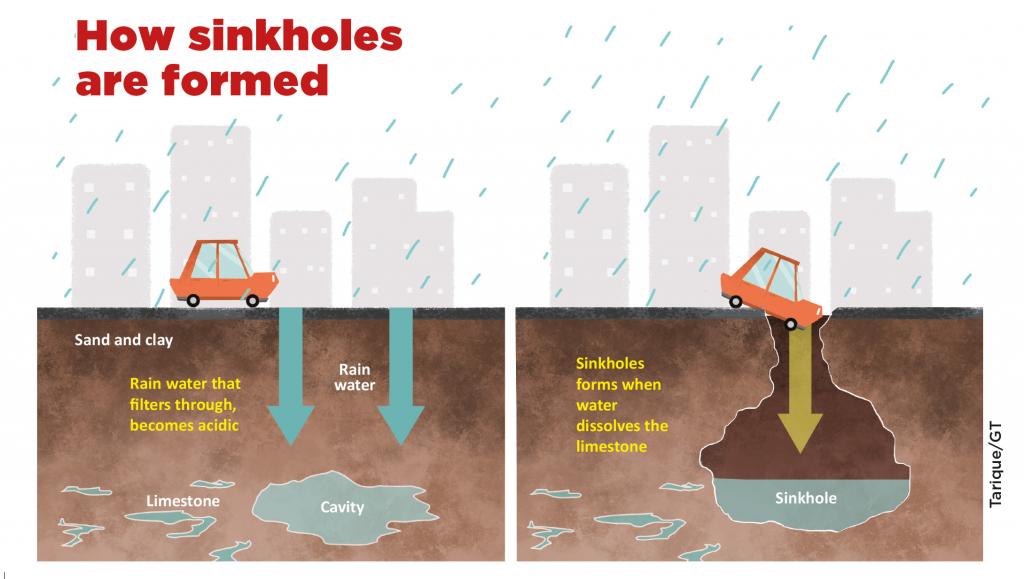
It was a Sunday afternoon in April when a portion of a busy road in Chennai’s Anna Salai caved in, pulling a state-run bus and a car into the huge crater, also known as a sinkhole.
Many people were injured and admitted to a nearby hospital. Soon after, the virtual world was flooded with comments criticising "inefficient" and "corrupt" goverment officials for the accident.
The caving in of a portion of a road is nothing new. With the onset of monsoon, the frequency and magnitude of these events increase. So does that mean there is a direct connection between rain and incidences of caving in?
Think of the crust of Earth. It is made of rocks, which are made of limestone, among other susbtances.
When rainwater seeps through soil, it absorbs carbon dioxide present in the air and reacts with decaying vegetation, and becomes acidic. This acidic water moves through the cracks underground, and slowly dissolves the limestone, creating a network of cavities. As the limestone dissolves, pores and cracks are enlarged and carry even more acidic water. This creates voids below the surface. The land collapses into these cavities. The seeping in of water into the limestone also gives the sinkhole its typical dome-shaped structure.
But sometimes sinkholes can be triggered by human activities, such as groundwater exploitation and rampant drilling of wells.
In urban and sub-urban areas, sinkholes can prove to be hazardous because they can destroy highways and buildings. Sinkholes can also affect the quality of drinking water. This is because surface water leaks into underground aquifers, which is a source of our drinking water.
But can sinkholes be prevented?
Natural sinkholes cannot be prevented. However, those caused by human activity can be avoided, especially those caused by groundwater exploitation. Water conservation, drought management and keeping the groundwater table high are some ways to help prevent sinkholes from occurring.